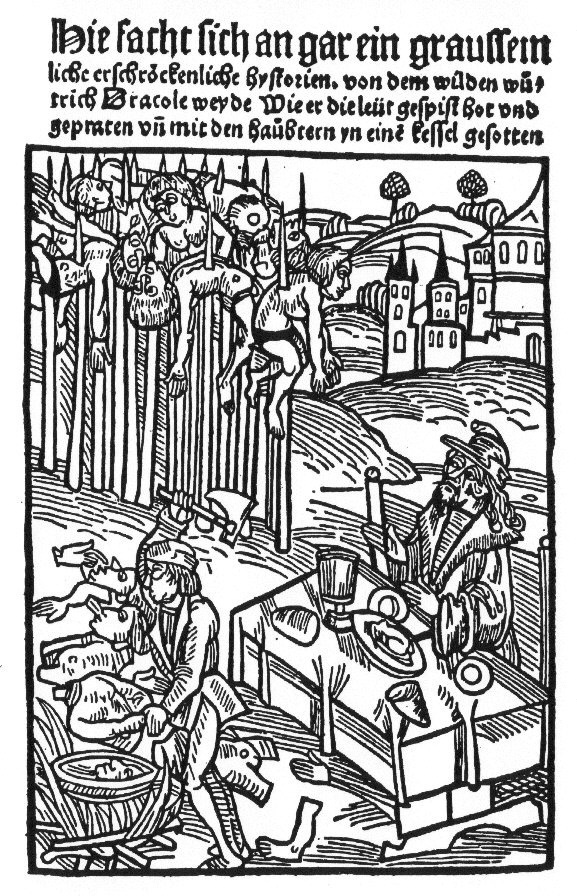User:Cythous/sandbox
| Vlad the Impaler’s Impalement of Ottoman Forces | |||||||
|---|---|---|---|---|---|---|---|
| Part of Ottoman–Wallachian Wars | |||||||
 | |||||||
| |||||||
| Belligerents | |||||||
| Wallachia | Ottoman Empire | ||||||
| Commanders and leaders | |||||||
| Vlad III | Mehmed II | ||||||
| Strength | |||||||
| Unknown | 150,000 (Ottoman forces) | ||||||
| Casualties and losses | |||||||
| Minimal | Estimated tens of thousands impaled | ||||||
Vlad the Impaler’s Impalement of Ottoman Forces refers to the mass execution and impalement of Ottoman soldiers by Vlad III, ruler of Wallachia, during his resistance against the invasion of the Ottoman Empire in 1462. The event is one of the most infamous instances of psychological warfare in medieval history and has contributed to Vlad’s enduring reputation as a brutal but effective military leader.
Background
[edit]During the 15th century, the Ottoman Empire expanded rapidly across southeastern Europe, attempting to subdue smaller kingdoms like Wallachia. Vlad III, known as Vlad the Impaler, rose to power in Wallachia in 1456 and fiercely resisted Ottoman domination. His reign was marked by brutal tactics intended to instill fear in his enemies, with impalement being his most notorious method.
The 1462 Campaign
[edit]In 1462, Sultan Mehmed II launched a campaign against Vlad III after he refused to pay tribute to the Ottoman Empire. Facing an overwhelming Ottoman force, Vlad employed guerrilla warfare tactics, ambushes, and scorched earth strategies. However, his most infamous action occurred when the Ottomans advanced on Târgoviște, the Wallachian capital.
The Forest of the Impaled
[edit]Upon nearing Târgoviște, Ottoman forces were met with a gruesome sight known as "The Forest of the Impaled." According to contemporary accounts, Vlad had impaled between 20,000 and 30,000 Ottoman prisoners and arranged their bodies along the road leading to the city. The sheer scale of the atrocity caused Sultan Mehmed II to retreat temporarily, as the psychological impact on his troops was profound.
Historical Accounts
[edit]Several chroniclers from the period, including the Byzantine historian Laonikos Chalkokondyles and the Ottoman historian Tursun Beg, describe the mass impalement. Reports vary on the number of victims, but all emphasize the horror and scale of the act. Western European sources often sensationalized Vlad’s brutality, contributing to his legendary status.
Aftermath
[edit]Vlad’s tactics, including the mass impalement, delayed the Ottoman advance but could not stop it entirely. Wallachia would eventually come under Ottoman control, though Vlad’s actions left a lasting impact on both Wallachian and Ottoman histories. The event solidified Vlad’s place in folklore as a ruthless leader who would go to any lengths to defend his homeland.
Legacy
[edit]The impalement of Ottoman forces remains one of the most iconic episodes in the life of Vlad the Impaler. Though often portrayed as a sadistic act, it was a calculated move aimed at using terror to demoralize a larger and better-equipped enemy. Vlad’s reputation as both a national hero and a figure of terror persists to this day in Romanian and global culture.
See Also
[edit]References
[edit]External Links
[edit]- [Link to relevant historical articles or archives]
